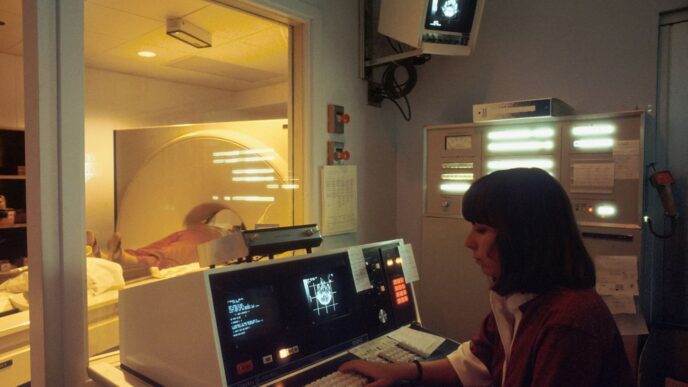Hey everyone, so the world of medical tech, or MedTech, is changing super fast, especially when it comes to keeping things secure. You know, those devices that help doctors and patients? They’re getting smarter, more connected, but that also means they’re becoming targets for cyberattacks. It’s not just about protecting data anymore; it’s about making sure these devices work right when people’s health is on the line. Plus, governments around the world are stepping in with new rules, making it a bit of a maze for companies. We’re going to break down what’s happening with medtech cybersecurity, the new regulations, and what companies need to do to keep up.
Key Takeaways
- Cybersecurity needs to be a top priority right from the start when designing medical devices, not something you tack on later.
- The rules for medical device security are getting stricter and are different in places like the US and Europe, so companies have to pay close attention to all of them.
- Future tech like quantum computing could break current security, so planning for that is important now.
- When companies work with other businesses for parts or software, they need to make sure those partners are also secure to avoid problems.
- It’s really important for companies to work with security experts and regulators to make sure their devices are safe and meet all the requirements.
The Evolving Landscape of MedTech Cybersecurity
It feels like just yesterday that cybersecurity for medical devices was something companies thought about after the product was already built. You know, a quick check to see if it was mostly okay. But that’s really not the case anymore. The world of connected health tech is changing fast, and with it, the risks. Cybersecurity has to be a main ingredient from the very start of designing a new device.
Cybersecurity as a Core Design Consideration
Think about it: medical devices are getting smarter, more connected, and they handle some of the most sensitive information out there. This means they’re also becoming bigger targets for bad actors. It’s not just about protecting patient data anymore; it’s about making sure the devices themselves work correctly and safely. Regulators are catching on, and they’re expecting manufacturers to build security in from the ground up. This isn’t just a suggestion; it’s becoming a requirement. Companies need to bake security into the entire process, from the initial idea all the way through to when the device is retired.
Increasing Regulatory Demands Globally
Speaking of regulators, they’re not playing around. Agencies like the FDA in the US and bodies in the EU are putting out clearer rules and expectations. It used to be a bit of a free-for-all, but now there are more specific guidelines. This means manufacturers have to pay closer attention to documentation, risk assessments, and how they plan to handle security issues after a device is out in the field. It’s a lot more work, but it’s necessary to keep patients and their data safe.
Emerging Threats and Future-Proofing Devices
And the threats keep changing. We’re not just talking about old-school viruses anymore. Things like quantum computing are on the horizon, and they could break current encryption methods. Plus, the way devices are connected – through networks, other devices, and the cloud – creates more entry points for attackers. So, companies need to think not just about today’s threats, but also about what might happen in five or ten years. Building devices that can adapt and be updated is key to staying ahead of the curve.
Navigating the Complex Regulatory Environment

Okay, so the rules for medical tech are really changing, and it’s not just a little bit. It feels like every time you turn around, there’s a new guideline or a different way things need to be done. It’s a lot to keep up with, honestly. You’ve got agencies like the FDA in the US and the EU with their own sets of rules, and they don’t always line up perfectly. It’s like trying to follow two different instruction manuals at the same time.
FDA’s Prescriptive Approach to Cybersecurity
The FDA has been pretty clear about what they expect when it comes to cybersecurity for medical devices. They’ve put out guidance that’s gotten more detailed over time. It’s not just a suggestion anymore; they want companies to really think about security from the very beginning of the design process. This means considering things like how data will be protected, how devices will be updated if a vulnerability is found, and how to make sure only authorized people can access the device. They’re basically saying that cybersecurity isn’t an afterthought; it’s a requirement. They want to see a plan for how you’re going to keep devices safe throughout their entire life, not just when they first come out.
EU MDR and Generic Global Standards
Over in Europe, the Medical Device Regulation (MDR) is a big deal. It’s pretty thorough and covers a lot of ground, including cybersecurity. While the MDR itself is specific to the EU, it also pushes companies to think about broader, more generic global standards. Many countries look at what the EU is doing and adapt similar requirements. This means if you’re selling devices in Europe, you’re likely meeting the baseline for a lot of other places too. It’s a way to try and get everyone on the same page, even if the details might differ slightly from country to country. They’ve even extended some deadlines, which gave companies a bit of breathing room, but the core requirements are still there and need to be addressed.
Harmonization Efforts by IMDRF
Trying to make all these different rules work together is a huge task. That’s where groups like the International Medical Device Regulators Forum (IMDRF) come in. They’re working to get different countries talking and to find common ground on how to regulate medical devices. The goal is to make it easier for companies to sell their products in multiple markets without having to completely reinvent their processes for each one. They’ve been looking at things like quality management systems and cybersecurity, trying to create recommendations that most regulators can agree on. It’s a slow process, but it’s important for making the global medical device market a bit more predictable.
Key Regulatory Updates and Their Impact
Things are really changing fast in the medical device world, especially when it comes to rules and regulations. It feels like every time you get a handle on one thing, a new update pops up. Let’s break down some of the big ones that are making waves right now.
FDA’s Enhanced Premarket Cybersecurity Guidance
The FDA has been stepping up its game on cybersecurity for medical devices. They’ve put out updated guidance that really emphasizes making sure devices are secure right from the start. This isn’t just a suggestion anymore; it’s becoming a pretty big deal for getting new products approved. They want manufacturers to think about potential threats and build in protections before a device even hits the market. It’s all about protecting patient data and making sure these devices work as they should without being tampered with.
- Manufacturers need to show how they’ve thought about cybersecurity risks during the design phase.
- They’re looking for plans on how to handle vulnerabilities that might pop up later.
- Documentation is key – you’ve got to show your work and prove that security was a priority.
EU’s Cyber Resilience Act and Certification Schemes
Over in Europe, things are also getting more serious about cybersecurity. The EU has introduced the Cyber Resilience Act, which is a pretty big deal for any device sold there. It basically means devices need to be secure by design and continue to be secure throughout their lifespan. This involves new requirements for manufacturers, including things like vulnerability management and reporting. They’re also looking at certification schemes, which could mean devices will need to pass specific security tests to get approved. It’s a move towards a more standardized and robust approach to digital security for medical tech.
Post-Market Surveillance and Vulnerability Management
It’s not just about getting a device approved and then forgetting about it. Regulators are increasingly focused on what happens after a device is out in the field. This means robust post-market surveillance is a must. Companies need to have systems in place to monitor devices for any security issues that arise. When a vulnerability is found, there needs to be a clear plan for how to address it, whether that’s through software updates or other patches. Transparency with both regulators and users about these issues is becoming non-negotiable. It’s a continuous cycle of monitoring, identifying, and fixing to keep devices safe and effective.
Integrating Cybersecurity Throughout the Device Lifecycle
It’s not enough to just think about cybersecurity when a device is being designed. Nope, not even close. We’ve got to keep it in mind from the moment an idea sparks all the way until that device is retired. This means security isn’t just a feature; it’s part of the whole package, from start to finish.
From Design to Decommissioning
Think of it like building a house. You wouldn’t just slap on a security system after the walls are up, right? You’d think about where the doors and windows go, how strong they are, and maybe even plan for smart home tech from the get-go. Medical devices are the same. We need to bake security into the blueprints. This covers everything:
- Initial Concept & Design: What are the potential weak spots? How can we build them out from the start?
- Development & Testing: Rigorous checks to find and fix bugs before they become problems.
- Manufacturing: Making sure the production process itself doesn’t introduce vulnerabilities.
- Deployment & Use: How will users interact with the device securely? What information do they need?
- Maintenance & Updates: Keeping the device safe over its working life.
- End-of-Life: Securely retiring the device so no data is left exposed.
The goal is to make security a non-negotiable part of every single step.
Lifecycle Management and Patching Strategies
Devices aren’t static. They get used, they get connected, and threats change. So, how do we keep them safe over years, not just months? It comes down to having a solid plan for managing the device’s entire life. This includes:
- Regular Updates: Just like your phone needs updates, medical devices do too. This means having a system in place to push out patches for newly discovered issues.
- Vulnerability Monitoring: Actively looking for new threats that could affect your devices.
- Clear Communication Channels: Letting users know when updates are available and why they’re important.
- Version Control: Keeping track of which software versions are running on which devices.
It’s a bit like keeping a car maintained. You don’t just drive it until it breaks; you get oil changes and checkups. For devices, these checkups are software updates and security reviews.
Transparency in Cybersecurity Controls and Risks
Nobody likes surprises, especially when it comes to their health. Manufacturers need to be upfront about the security measures they’ve put in place and what potential risks might still exist. This means:
- Clear Documentation: Providing easy-to-understand information about the device’s security features.
- Risk Disclosure: Being honest about known vulnerabilities or potential threats, and what’s being done about them.
- User Guidance: Helping users understand their role in keeping the device secure.
Think of it like a nutrition label for your device’s security. It tells you what’s inside and what to watch out for. This builds trust and helps everyone involved manage risks better.
Addressing Specific Cybersecurity Risks
Okay, so we’ve talked a lot about the general stuff, but let’s get into some of the nitty-gritty risks that are really starting to pop up in the MedTech world. It’s not just about hackers trying to steal patient data anymore; it’s about devices themselves being compromised, which can have some pretty serious consequences.
The Threat of Quantum Computing
This one sounds like science fiction, but it’s a real concern for the future. Quantum computers, when they become powerful enough, could break a lot of the encryption methods we use today. Think about it: if current encryption can’t stand up to these new machines, then all that sensitive patient information stored or transmitted by medical devices could become vulnerable. It’s not like we can just flip a switch and update all existing devices overnight. Manufacturers need to start thinking about how to build devices now that can handle these future threats, maybe using new types of encryption that are resistant to quantum attacks. It’s a bit like trying to build a house that can withstand a hurricane when you’ve only ever experienced mild breezes. We need to start designing with post-quantum cryptography in mind, even if it seems far off.
Supply Chain and Third-Party Vulnerabilities
This is a big one. Medical devices aren’t built in a vacuum. They’re made up of lots of different parts, software components, and often rely on services from other companies. Think of it like a car – it has thousands of parts from different suppliers. If just one of those suppliers has a weak link in their security, it can create an opening for attackers. This could mean a piece of hardware is tampered with, or a software library has a hidden flaw. It’s really hard for manufacturers to know the security status of every single component that goes into their device, especially when they’re using off-the-shelf parts or open-source software. It means manufacturers have to be super careful about who they partner with and what they’re putting into their devices. They really need to check out their suppliers’ security practices.
Internet Connectivity Risks
More and more medical devices are connecting to the internet, which is great for remote monitoring and data sharing, but it also opens up new attack vectors. When a device is connected, it’s potentially exposed to the wider internet. This means it could be targeted by malware, denial-of-service attacks, or unauthorized access. Even if a device doesn’t handle super sensitive data, if it’s connected to a hospital network, it could be used as a stepping stone to get to other, more critical systems. It’s like leaving your front door unlocked just because you live on a quiet street; you still need to lock it. So, manufacturers have to think about how to secure these connections, limit what the device can do on the network, and make sure it’s not an easy target.
Strategies for MedTech Cybersecurity Compliance
So, how do you actually make sure your medical devices are secure enough to meet all these new rules and keep patients safe? It’s not just about slapping on some antivirus software. You really need a solid plan. Thinking about security from the get-go is the most important thing.
Risk-Based Approach to Security
Look, not all devices are created equal when it comes to cyber risks. Some might be connected to the internet and handle super sensitive patient data, while others might be standalone and pretty basic. You’ve got to figure out what’s most likely to be attacked and what would cause the biggest problem if it were compromised. That’s what a risk-based approach is all about. It means you focus your security efforts where they’ll do the most good. You don’t want to waste time and money on protecting things that aren’t really at risk or wouldn’t cause much harm if they were breached.
Here’s a simple way to think about it:
- Identify Assets: What devices do you have? What data do they use or store?
- Assess Threats: What bad things could happen? Who might try to do them?
- Evaluate Vulnerabilities: Are there weaknesses in your devices or systems that could be exploited?
- Determine Impact: If a threat exploits a vulnerability, how bad would it be for patients or the hospital?
- Prioritize Controls: Based on all that, decide which security measures are most important to put in place first.
Collaborative Engagement with Regulators
Don’t just guess what the regulators want. It’s actually pretty smart to talk to them. They’re not trying to trick you; they want safe devices too. When you’re developing a new device, or even updating an old one, reach out. Ask questions about their expectations for cybersecurity. Sharing your plans and getting their feedback early can save you a lot of headaches down the road. It shows you’re serious about security and helps you avoid costly mistakes. Think of it as a partnership. They have the rules, and you have the technical know-how. Working together makes the whole process smoother.
Security-By-Design Principles
This is a big one. Instead of trying to add security features after a device is already designed, you build them in from the very start. It’s like building a house with strong foundations and good locks from day one, rather than trying to reinforce it after it’s already built. This means thinking about things like:
- Secure Coding Practices: Writing software that’s less likely to have bugs that hackers can exploit.
- Access Controls: Making sure only authorized people or systems can access sensitive data or device functions.
- Data Encryption: Scrambling data so that even if someone gets it, they can’t read it.
- Secure Communication: Protecting the information that devices send and receive.
- Regular Updates: Planning how you’ll provide security patches and updates throughout the device’s life.
The Future of MedTech Cybersecurity
Looking ahead, the world of medical device cybersecurity isn’t slowing down. It’s actually picking up speed, and staying on top of things is going to be a big deal for everyone involved. Think of it like this: the tech in our medical devices is getting smarter and more connected every day, which is great for patient care, but it also means more doors for bad actors to try and get through. So, what does this mean for manufacturers and the devices themselves?
Continuous Regulatory Awareness
Regulations are always changing, and for medical devices, they’re getting more specific about cybersecurity. It’s not enough to just check a box anymore. You’ve got to keep up with what the FDA, the EU, and other global bodies are saying. This means constantly watching for new guidance, understanding how it applies to your devices, and making sure your documentation is solid. Staying informed isn’t just good practice; it’s becoming a requirement for market access. It’s like trying to follow a recipe that keeps getting new ingredients added – you have to adapt.
Investing in Future-Ready Systems
We’re talking about devices that need to last for years, sometimes decades. The threats today might be different from the threats in five or ten years. One big thing on the horizon is quantum computing. While it sounds like science fiction, it has the potential to break current encryption methods. Manufacturers need to start thinking about how their devices will handle these future challenges. This means building systems that can be updated and adapted, rather than designing something that becomes obsolete and insecure too quickly. It’s about building with tomorrow in mind, not just today.
Fostering a Culture of Security
Ultimately, making sure medical devices are secure isn’t just an IT department’s job or a compliance officer’s task. It needs to be part of how everyone in a company thinks, from the engineers designing the devices to the people selling them. This means training, clear communication, and making security a priority at every step. When everyone understands the risks and their role in preventing them, the whole system gets stronger. It’s about building security into the DNA of the company and its products, making it a natural part of the process, not an add-on.
Looking Ahead: Staying Secure in a Connected World
So, where does this all leave us? It’s pretty clear that keeping medical devices safe from cyber threats isn’t just a technical issue anymore; it’s a big deal for patient safety and trust. Regulators around the world, like the FDA and the EU, are really stepping up their game, making sure manufacturers build security in from the start, not as an afterthought. This means companies need to be smart about how they design their products, keep them updated, and be ready for whatever new threats pop up, like those coming from quantum computing. It’s a lot to keep track of, with different rules in different places. But by working closely with experts, staying on top of what the regulators are saying, and making security a top priority from day one, the MedTech industry can keep innovating and making life-saving tech that people can rely on. It’s about building a future where technology helps us stay healthy, safely.














